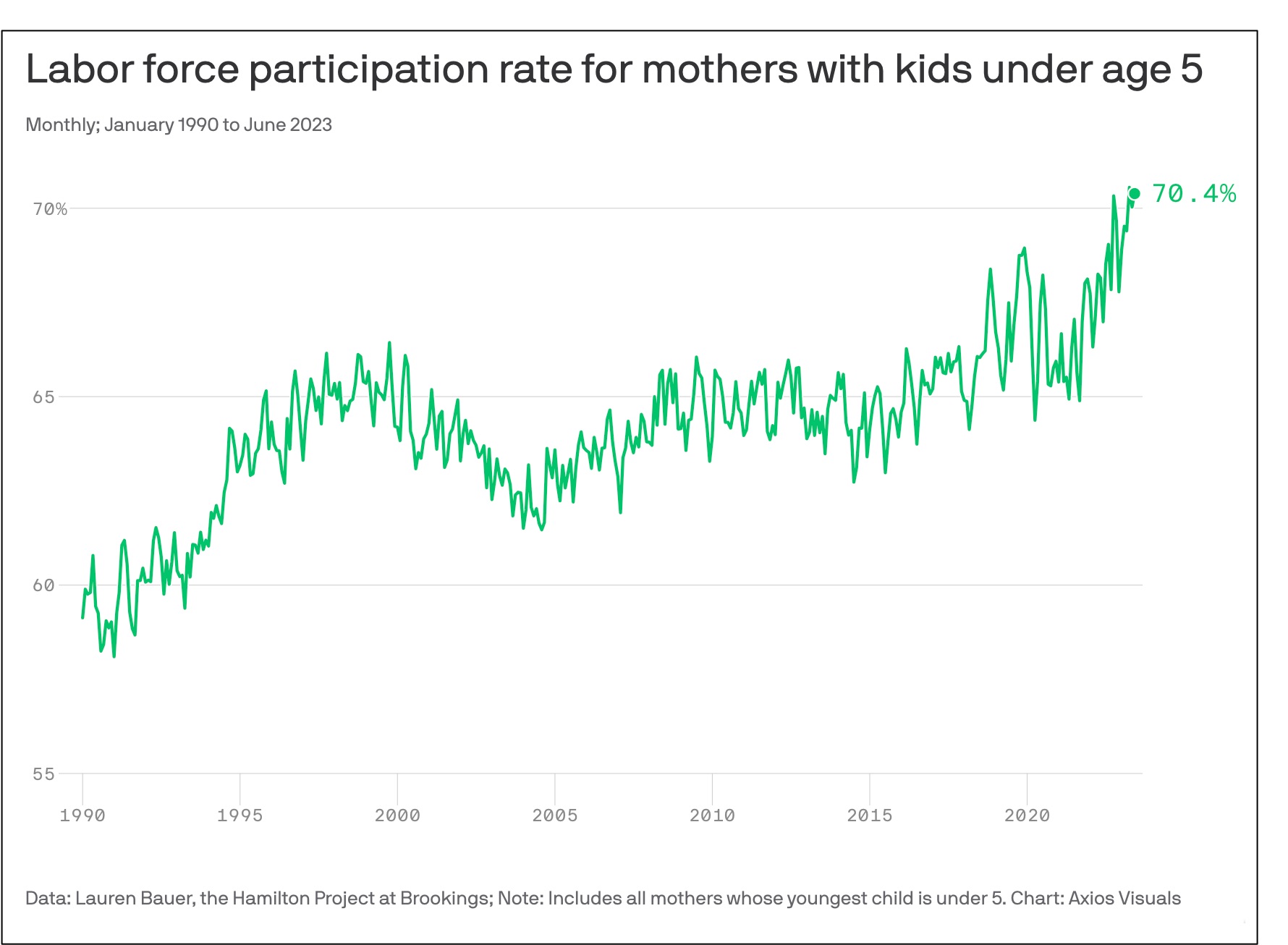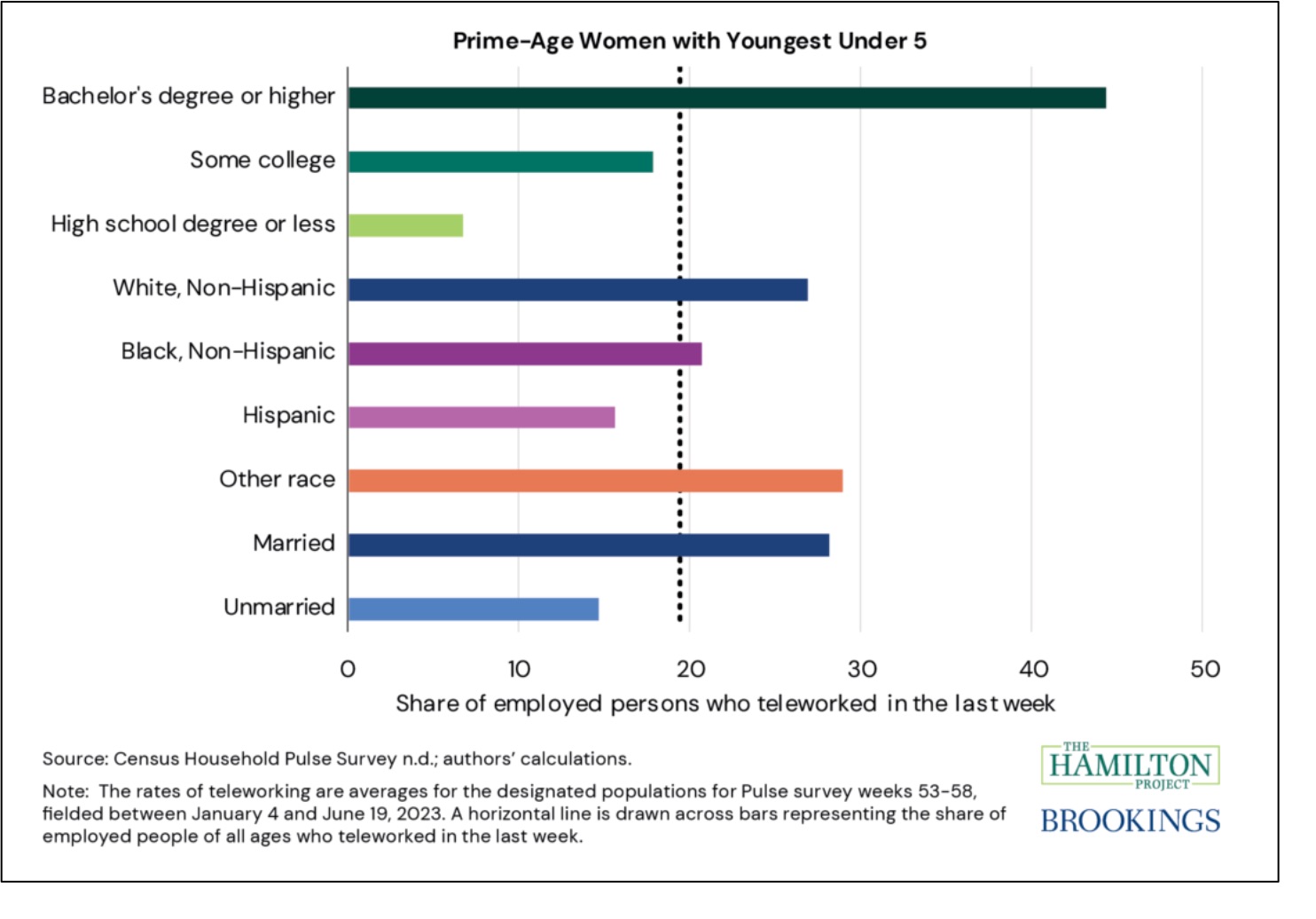After pandemic participatory lows, economists doubted that the droves of women leaving the labor force would return.
They were wrong.
Younger Working Women
Between the early 1950s and 2000, women came close to doubling their labor force participation rate. Ascending from 33 percent to 60 percent, prime age women (25-54) disrupted the traditional household division of labor. Originally described by economist Gary Becker, the family was like a little factory. With children their output, the husband and wife divided the tasks. One watched the kids and cared for the home while the other brought home the income that paid for it all.
Below, you can the line’s steep climb for moms with young children since 1990:

The original group of working women had teenagers or no children at home. Now, post-pandemic, households have again changed with women whose youngsters are under five pushing their participation rate beyond pre-pandemic highs. Looking more closely, researchers at the Hamilton Project tell us that these women are married, highly educated, or foreign born.
Here though we have to add another ingredient.
Teleworking.
Illustrated below by the long black line, young mothers with a Bachelor’s degree or higher represented a hefty share of the people that recently teleworked:
Our Bottom Line: Participation Rates
The participation rate is about people that are or could be in the labor force.
Think of it this way…
The U.S. labor force is composed of women and men 16 and over who are gainfully employed or unemployed and looking for a job. No job? Not looking? 16 or over? Then you are not participating in the labor force. Mathematically, the participation rate compares everyone who is or could be in the labor force to those who actually are in it.
If indeed the trend continues, then we have new norms that, as journalist Emily Peck describes, let women pick up feverish children at daycare, take kids to playdates, and schedule midday doctor appointments. As we have posted in the past, it all adds to women’s mental load, illustrated so cleverly and insightfully by French feminist cartoonist Emma.
My sources and more: Thanks to Emily Peck at Axios for inspiring today’s post. Then, this Hamilton Project report had the details.







